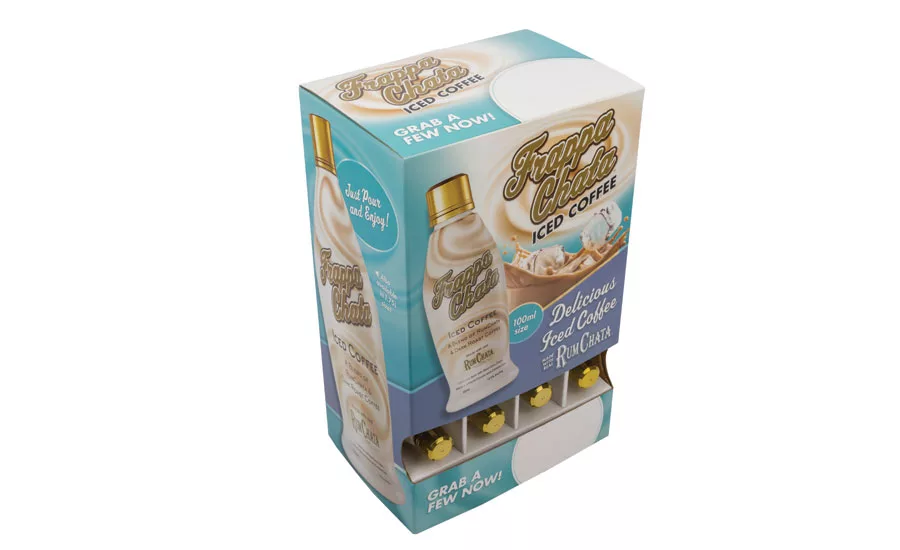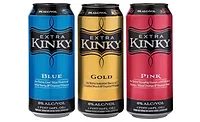Analytics furthers category management across beverages
Beverage companies at all levels employing new strategies

FrappaChata Iced Coffee provides the opportunity for impulse sales with the FrappaChata 100-ml dispenser available for checkout counters. (Image courtesy of Agave Loco LLC)
Once a topic reserved more for statisticians than the everyday consumer, analytics have become a relevant tool across many areas of industry whether that be sports, politics, shopping and much more. In today’s competitive beverage market, brand owners and retailers are seeing the value of these micro-level insights to better understand how they can tap into consumers’ purchasing drivers while also producing a growing revenue model.
“The main evolution the beverage industry has seen in this space is the rise of revenue growth management (RGM),” says Brian Elliot, managing partner at New York-based Periscope By McKinsey. “RGM is now used by most major players in the beverage sector and has raised the bar in terms of what businesses have to do to gain competitive advantage. The adoption of RGM started in the soda industry, then became commonplace in the beer sector, and is now spreading to the distributors of alcoholic beverages, not just the brewers and distillers of the drinks.”
Elliot adds that most of the top beverage manufacturers have implemented revenue growth teams. This has created an “arms race,” as these producers utilize more sophisticated tactics that support the RGM model, he notes.
“Now the competition is moving past just RGM strategy to require real excellence in execution,” Elliot explains. “The chain to impact starts with strategy, people and process of course, but with those now in place, the next dimension of competition is turning to advantaged data quality, insight quality and digital RGM tooling to ensure the insights are executed in a dynamic learning loop. Said differently, competitive advantage is moving into more granular insights and digital process execution in pricing, promotion and assortment to squeeze out additional benefits over competitors.”
By utilizing analytics to maximize assortment, pricing and promotions, brand owners are seeing year-on-year growth between zero and 3 percent, Elliot says. Noting that these segments offer low-growth opportunities, this can be quite valuable in terms of sales and profit, he adds.
Vikas Satyal, senior director of commercial marketing for White Plains, N.Y.-based HEINEKEN USA, echoes similar thoughts about advancements in category management, and merchandising programs and execution.
“We think the biggest change is that both manufacturers and retailers are investing more proactively in category management roles, technologies and execution,” he says. “In terms of roles, companies are either creating centers of excellence — merging category, shopper, consumer and multiple data sources — or are simply adding headcount to drive better data science to permeate the organization. In terms of technologies, it’s not just about leveraging syndicated data like IRI or Nielsen; the best companies are merging shopper loyalty card data with the syndicated ROM, and platforms like virtual reality, eye-tracking, shop-alongs, attitudinal surveys and more, to generate a more holistic understanding of the shopping experience.
“In turn, this helps to drive strategy from a space, flow and assortment standpoint,” Satyal continues. “Finally, in terms of execution, it’s no longer just about the most number of SKUs or the ‘stack it high and let it fly’ secondary display concept; changing consumer tastes and preferences, shopper diversification, and innovation — in addition to the maturation of eCommerce — are all driving SKU rationalization, more creative displays and aisle reinventions to drive education, traffic and conversion.”
This deeper understanding has helped HEINEKEN USA implement strategies with the shopper’s best interest in mind, Satyal says.
“HEINEKEN isn’t just about our global portfolio of brands from around the world; we’re all about leveraging our vast knowledge of shoppers, consumers, and retailers in global markets to drive our official value proposition, ‘Profit From a World of Experience,’” he says. “We leverage our understanding of global macro trends, consumer segmentation and category occasions to drive our brand platforms and our retail partnerships. From a visionary standpoint, we have shared aisle reinvention concepts with some major retailers in the U.S. who have since invited us to develop their in-store layouts.
“From a more tactical standpoint, the biggest change we’ve seen in the past year is that more and more retailers are reaching out to us to be their beer category validators; not just because of our global and domestic expertise, but because they realize that the domestic players are responsible for 100 percent of their category declines, and they want someone new; they trust us to be fair and accurate in drawing the sets the way they intended,” Satyal continues. “This is a shift from a time when the domestic players removed growing competitive items to protect their own share, to the detriment of the category, shopper experience and retailers’ bottom line. As a result, and given the demand, we’re starting to invest more in our category team’s capabilities while looking to add more customer-facing resources.”
Catalysts for change
The need for more advanced analytics within category management stems from not only the proliferation of flavors and brands, but also the formats in which consumers are purchasing beverages.
“One of the key trends currently being played out is the continued diversification in packaging and flavors of beverages to go after different shoppers and occasions,” Periscope By McKinsey’s Elliot says. “This has made getting assortment right more important than ever. With more SKUs than can fit on any shelf, it has become more important to get the right products in the right locations in the right number of facings to grab the pockets of growth.
“New data and new analytic techniques are allowing for the first time the localization of assortment planning by store segment or even by store, opening up new opportunities,” he continues. “This is no longer just for modern trade, but is also being applied to traditional trade as well by bottlers and distributors.”
However, Elliot notes that because an analytical approach to category management still is in its infancy, brand owners still can gain a competitive advantage when it comes to assortment. However, the outlets in which consumers are shopping is another aspect driving analytics usage, he adds.
“The other big trend we are seeing is around eCommerce,” Elliot details. “Not just direct to the consumer, but for manufacturers and bottlers/distributors working with retailers to enhance eCategory management. This means better measuring and managing the online shopping experience in terms of digital store execution, curated assortment, pricing and promotions of beverages. It also means managing that at both the normal key-account level but also in connection with the retailer’s digital team, which requires new skills and relationships for our key account managers.”
Competitive at all levels
Although more major beverage producers are investing in new ways to streamline category management and ultimately sales, brand owners at all production and sales levels are finding new ways to reach consumers at retail.
“Competition is fierce for floor/end-aisle displays and shelf space as more and more new brands come to market,” says Tim Condron, RumChata vice president of new business development and national accounts for Agave Loco LLC, Chicago. “At the same time, larger spirit companies have the resources and manpower to keep their brands top of mind with retailers — pushing out mid-level suppliers. As one of those mid-level suppliers, RumChata has had to rely on the power and popularity of the brand to remain a focus year-round at retail. RumChata has brought new life and activity to the cordial category, which has been stagnant over the last number of years.”
The cordial brand has even co-promoted with other premium spirits brands as part of national programs with retail accounts. Examples include Jack Daniel’s Honey and Tennessee Fire varieties, both brands within Brown-Forman Corp.
Packaging and merchandising facings also have helped elevate the brand in store sets, Condron says.
“Facings have also been expanded for the brand through placement of our innovative new packaging, MiniChatas coffee creamer cups and GoChatas 100-ml three-packs on the shelf next to bottles,” he says. “RumChata MiniChatas and GoChatas are examples of breakthrough packaging ideas unique to the cordial category that drives impulse purchases at shelf and at checkout.
“The RumChata brand has now been extended to the [ready-to-drink] (RTD) category shelf space with the launch of FrappaChata Iced Coffee,” Condron continues. “FrappaChata also provides the opportunity for impulse sales from cold boxes. Most recently, the FrappaChata 100-ml dispenser has been made available for the checkout counter along with our very popular RumChata 50-ml bottles.” BI
Looking for a reprint of this article?
From high-res PDFs to custom plaques, order your copy today!





